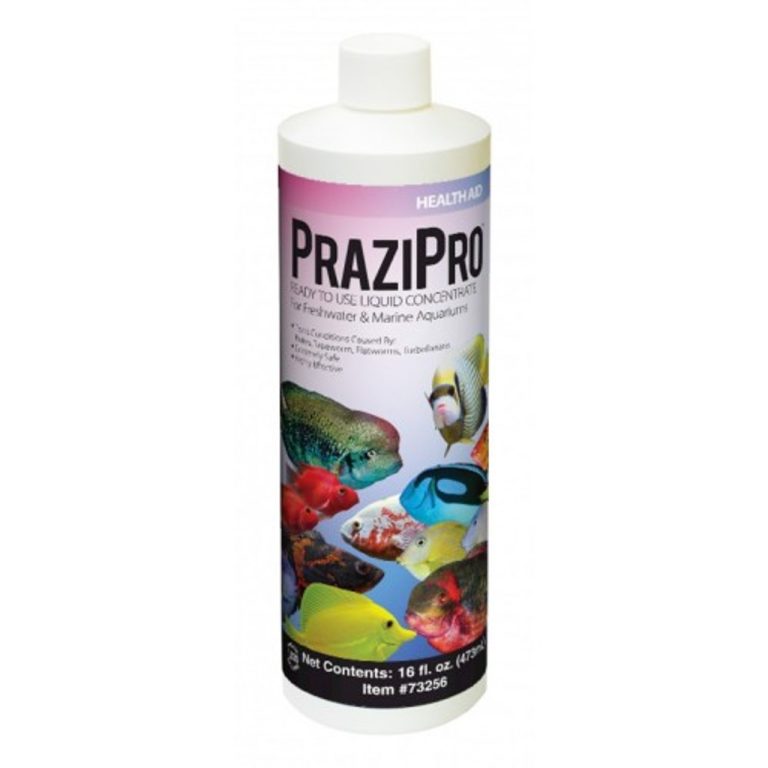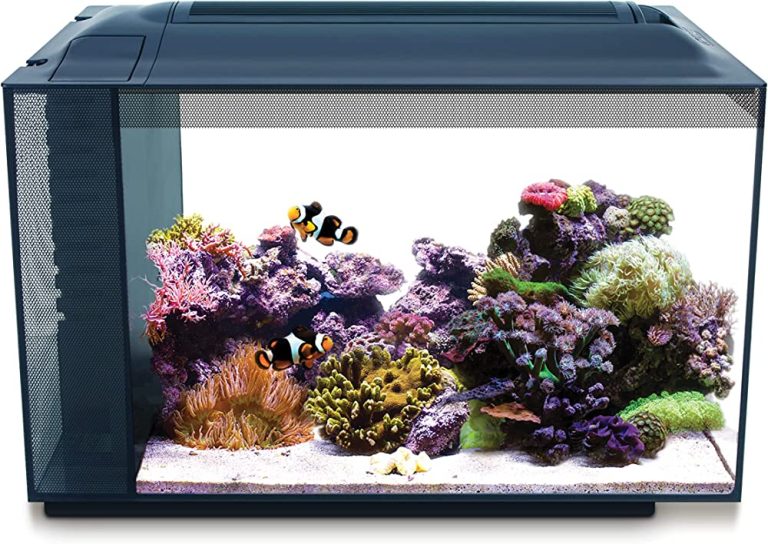Upgrade Your Aquarium with a Superior Wet Dry Filter
Aquarium wet dry filter is a filtration system used to remove waste and debris from aquarium water. It works by allowing water to flow through a container filled with filter media and then into a biological chamber where beneficial bacteria break down harmful compounds.
An effective wet dry filter helps maintain a healthy aquatic environment by providing clean and clear water for fish and other aquatic animals. Aquarium enthusiasts are well aware of the importance of water filtration in maintaining the health of their aquatic pets.
Water filtration helps to prevent the buildup of harmful compounds such as excess nutrients, waste, and organic matter, which can lead to the growth of harmful bacteria and algae. The aquarium wet dry filter is one of the most popular filtration systems used by aquarists. This system provides efficient mechanical filtration through filter media and aids biological filtration with the help of beneficial bacteria. A well-designed and maintained wet dry filter ensures a healthy and thriving aquatic ecosystem.

Credit: www.reddit.com
What Is A Wet-Dry Filter And Why Is It Important For Aquariums?
Aquarium wet dry filter: what is a wet-dry filter and why is it important for aquariums?
If you’re an aquarium enthusiast, then you know how vital it is to keep the aquarium environment clean and healthy for the fish and other aquatic life. That’s where the wet-dry filter comes in. It’s a crucial component that greatly contributes to maintaining the aquarium’s water quality.
In this blog post, we’ll discuss the wet-dry filter, its definition, functions, benefits, and how it operates.
Definition And Functions Of A Wet-Dry Filter
A wet-dry filter (also known as trickle or sump filter) is a mechanical filter that helps remove pathogens, waste, and other debris from the aquarium. It functions by allowing water to trickle over a filtration media, such as bio-balls or ceramic rings, which aid in the breakdown of organic compounds.
Here are some significant functions of wet-dry filters:
- Oxygenation: Wet-dry filters provide efficient oxygenation by allowing the water’s surface area to increase, promoting gas exchange and ensuring fish and other aquatic animals are healthy.
- Biological filtration: The wet-dry filter’s media traps and removes impurities, which are decomposed by beneficial bacteria. These bacteria play a vital role in maintaining the aquarium’s ecosystem by transforming harmful compounds into less harmful ones.
- Chemical filtration: Wet-dry filters actively absorb harmful substances from the water, such as nitrite and ammonia. This way, the water remains clear and safe for fish and other aquatic life.
The Benefits Of Adding A Wet Dry Filter To Your Aquarium
Now that you know the functions of a wet-dry filter, let’s dive into the benefits of adding one to your aquarium:
- Promotes clean water: Wet-dry filters help to keep aquarium water clean and clear of debris, preventing harmful toxins build-up that could kill fish and other aquatic creatures.
- Prevents contamination: The filter prevents the spread of harmful pathogens by trapping harmful particles, bacteria, and toxins, ensuring that water remains healthy for your pets.
- Supports aquatic life: A wet-dry filter ensures the aquarium has an adequate level of oxygen, which is key to promoting healthy aquatic life.
How A Wet-Dry Filter Works
Wet-dry filters work by allowing water to drain out of the aquarium into a sump tank, where filtration media such as bio-balls or ceramic rings are housed. Water is then trickled over the media, enabling the beneficial bacteria to decompose organic waste.
As the water trickles over the media, it also absorbs oxygen, which is essential for fish and other aquatic life. Finally, the filtered and oxygenated water is piped back into the aquarium.
A wet-dry filter is an essential tool for maintaining a healthy and clean aquarium ecosystem. The filter effectively removes harmful contaminants, promotes the growth of beneficial bacteria, and provides adequate oxygen to ensure that the fish and other aquatics remain healthy.
Consider adding a wet-dry filter to your aquarium setup, and you’ll be amazed at how much healthier and cleaner the water will remain.
Choosing The Right Type Of Wet-Dry Filter For Your Aquarium
Aquarium wet dry filter: choosing the right type of wet-dry filter for your aquarium
Are you in need of a good filtration system for your aquarium? Wet-dry filters are a great option as they provide superior biological filtration for your setup. However, with so many types of wet-dry filters available in the market, it can be challenging to select the right one for your aquarium.
This article will help you in understanding the different types of wet-dry filters available and factors you must consider before choosing the best one for your aquarium.
Factors To Consider When Choosing A Wet Dry Filter
Before purchasing a filter, consider the following factors:
- Size of your aquarium
- Bioload of aquatic animals
- Budget
- Maintenance requirements
Types Of Wet-Dry Filters Available In The Market
Different types of wet-dry filters available in the market are:
Hang-On-Back
Hang-on-back (hob) wet-dry filter sits on the back of the aquarium, on top of the water. These filters are versatile, budget-friendly, and easy to install. They are a great choice for small to medium-sized aquariums.
Here are some pros and cons of hob filters:
Pros:
- Easy to install
- Space-saving design
- Affordable
- Great for small-sized aquariums
Cons:
- Limited filtration capability
- Needs more frequent cleaning
In-Sump
In-sump wet-dry filters are great for larger aquariums. They are installed in the sump of the aquarium tank and are efficient.
Here are some pros and cons of in-sump filters:
Pros:
- High filtration efficiency
- Can handle larger aquariums
- Hidden from sights
Cons:
- Expensive
- Requires a sump
- Can be challenging to install
Internal Wet-Dry Filters
Internal wet-dry filters are compact and effective. They are installed inside the aquarium and are ideal for smaller setups. These are less efficient than in-sump filters but provide excellent filtration for small aquariums.
Here are some pros and cons of internal wet-dry filters:
Pros:
- Hassle-free installation
- Ideal for small aquariums
- Budget-friendly
Cons:
- Limited filtration capacity
- High maintenance
How To Choose The Best Wet-Dry Filter For Your Aquarium
Depending on the above factors, choose the one that suits your aquarium the best. Each filter type has its pros and cons, so it’s essential to find a balance between the size of your aquarium, budget, and maintenance requirements. Before purchasing, read reviews, and seek advice from other aquarium enthusiasts.
Make sure the filter you select can provide the required filtration capacity for the bioload of your aquarium.
Selecting the right wet-dry filter is critical to maintaining a healthy aquatic environment. Always consider the size of your tank, maintenance requirements, budget, and bioload before choosing a filter. By considering these factors, you will be able to make an informed decision and purchase a filter that caters to your aquarium needs.
Steps To Install A Wet-Dry Filter In Your Aquarium
Aquarium wet dry filter: steps to install a wet-dry filter in your aquarium
Aquarium wet-dry filters are an essential component of your aquarium system, as they play a vital role in maintaining the water quality and ensuring the health of your aquatic pets. A wet-dry filter helps to remove the waste and impurities from the water, providing a safe and healthy environment for your fish and other inhabitants.
Tools And Materials Needed For Installation
Before starting the installation process, make sure you have all the necessary tools and materials to avoid any delays or complications. Here are some of the essential tools and materials required for installing a wet-dry filter in your aquarium:
- Screwdriver and pliers
- Silicone sealant
- Pvc piping and fittings
- Aquarium safe glue and tape
- Appropriate sized wet-dry filter
How To Choose The Right Location For Your Wet-Dry Filter
Choosing the right location for your wet-dry filter is critical for its efficient functioning and your aquarium’s overall health. Here are some essential considerations to keep in mind:
- Place your filter in a location where it can support the weight of the filter, sump, and water.
- The filter should be positioned at a level lower than the aquarium to allow easy water flow.
- Choose an area that is easy to access when maintenance is required.
- Ensure there is enough space for the filter and sump and that the gear will fit comfortably.
Setting Up An In-Sump Wet-Dry Filter
In-sump wet-dry filters are popular due to their efficient filtration process. Here are the steps to set it up:
- Place the inlet hose on the far side of the sump, so it creates a natural flow pattern.
- Determine the required water level in the sump and set up an overflow to maintain it.
- Connect the overflow box to the filter to start the filtration process.
- Add filter media like bio-balls and foam pads to enhance filtration efficiency.
- Turn on the pump and check for leaks.
Installing A Hang-On-Back Wet Dry Filter
Hang-on-back wet-dry filters are relatively easy to install and maintain. Below are the steps to install one:
- Ensure the aquarium’s rim can support the weight of the filter and that the tank is level.
- Hang the filter on the back of the aquarium, directly above the water level.
- Attach hoses provided by the manufacturer.
- Fill the filter with mechanical and biological filter media, and turn on the pump.
- Check for leaks.
Installing An Internal Wet Dry Filter
An internal wet-dry filter is a versatile and space-saving option for smaller aquariums. Follow these steps to install one:
- Choose an internal filter based on the aquarium size and requirements.
- Install the filter according to the manufacturer’s instructions.
- Attach the required hoses and pipe.
- Add filter media such as mechanical and biological filters.
- Check for leaks and adjust as necessary.
Tips For Maintaining Your Wet-Dry Filter
Maintaining your wet-dry filter is crucial to keep a healthy environment for your aquatic pets. Below are some maintenance tips you need to follow:
- Regular maintenance ensures a longer lifespan for your filter and efficient functioning.
- Clean filter media like mechanical filters and sponges monthly.
- Replace carbon filters monthly.
- Check and adjust the ph levels and nitrates regularly.
- Clean the overflow regularly.
By following these steps and tips, you can install and maintain your wet-dry filter effectively, ensuring the health and longevity of your aquarium’s inhabitants.
How A Wet-Dry Filter Helps Improve Water Quality
Aquarium wet dry filter: how a wet-dry filter helps improve water quality
Maintaining a healthy aquatic environment is crucial for your fish’s wellbeing. The quality of the water your fish live in can determine their health, activity level, appetite, and overall lifespan. That’s why an appropriate filtration system is paramount in keeping the water clean and healthy.
This blog post will discuss the role of a wet-dry filter in improving water quality, the importance of biological filtration, and how to monitor aquarium water quality.
How Water Quality Affects Fish Health
Fish can not only absorb oxygen but also other substances through their gills into their bloodstream, making them extremely susceptible to the quality of the water they live in. Poor water quality can lead to various health problems, such as fin rot, skin diseases, and even death.
It is essential to monitor water quality parameters regularly, such as ph, ammonia, nitrites, and nitrates, to ensure they remain within safe ranges.
The Role Of A Wet-Dry Filter In Aquarium Water Filtration
A wet-dry filter, also known as a trickle filter, is a filtration system that utilizes both mechanical and biological filtration processes. This type of filtration system is incredibly effective in breaking down harmful waste products and pollutants in aquariums by removing unwanted debris and providing a perfect environment for beneficial bacteria to thrive.
The main benefits of using a wet-dry filter include:
- Superior biological filtration capability
- Aeration and oxygenation of the water
- Increased surface area for bacterial growth and activity
- Effective removal of heavy organic waste
The Importance Of Biological Filtration In An Aquarium
Biological filtration is critical in ensuring clean and healthy aquarium water for your fish. It involves a series of natural processes in which bacterial colonies break down harmful organic matter like fish waste and uneaten food into less toxic compounds like nitrate.
The bacteria colonies attach themselves to the filter media and grow under optimal conditions, through the help of a wet-dry filter. The beneficial bacteria in the aquarium keep the water chemistry in check, thereby creating a stable environment for your fish to thrive.
How To Monitor Your Aquarium Water Quality
Maintaining clean and healthy aquarium water is not an easy task, but it is possible by monitoring the water quality regularly. Here are some easy steps to follow:
- Test the water weekly using reliable test kits, including ph, ammonia, nitrite, and nitrate levels.
- Keep track of any sudden changes or warning signs, such as cloudy water or unusual fish behavior.
- Carry out weekly water changes and vacuuming of the aquarium substrate.
- Replace filter media and perform regular cleaning of the wet-dry filter.
A wet-dry filter is one of the most effective methods of aquarium filtration, offering superior biological filtration capabilities. Keeping your aquarium water clean and healthy is paramount for your fish’s wellbeing, and regular monitoring of water quality is a must.
We hope this post helps you understand the role of wet-dry filters in improving water quality in your aquarium.
Enhancing Your Aquarium With Wet-Dry Filter Accessories
Aquarium wet dry filter: enhancing your aquarium with wet-dry filter accessories
Keeping an aquarium clean is critical to the survival and well-being of its inhabitants. While a wet-dry filter does an excellent job of removing toxic substances from the water, adding accessories can improve its performance. Below are some of the most effective wet-dry filter accessories that can upgrade your aquarium’s functionality.
Accessories That Enhance The Performance Of A Wet Dry Filter
Protein Skimmers
A protein skimmer is an essential accessory in an aquarium. It helps to eliminate organic waste from the water, which can lead to the build-up of toxic substances. Here are some benefits of protein skimmers:
- Removes unwanted organic substances from the water
- Helps prevent the growth of harmful algae
- Increases oxygenation in the water
- Reduces the need for water changes
Uv Sterilizers
Uv sterilizers are devices that use uv light to kill bacteria, viruses, and parasites in the aquarium water. They are beneficial for aquariums containing delicate species that are particularly sensitive to medication. Here are some benefits of using a uv sterilizer:
- Eliminates harmful bacteria and parasites from the water
- Prevents diseases from spreading in the aquarium
- Helps maintain a healthy environment in the aquarium
- Reduces the need for medication
Chemical Filters
Chemical filters are another essential accessory for a wet-dry filter. They eliminate harmful substances such as nitrates, phosphates, and heavy metals from the water. Here are some benefits of chemical filters:
- Maintains the water quality in the aquarium
- Helps to remove impurities from the water
- Prevents toxic substances from accumulating in the water
- Provides a safe environment for the aquarium inhabitants
How Adding Accessories Helps In Upgrading Your Aquarium
Adding accessories to a wet-dry filter can have significant benefits for aquarium owners. Here are some of the ways they can upgrade your aquarium’s functionality:
- Enhances the water quality: By removing harmful substances from the water, accessories help to maintain a healthy environment in the aquarium.
- Reduces the need for water changes: Filters with accessories are more efficient in keeping the water clean, reducing the frequency of water changes.
- Increases the lifespan of the aquarium inhabitants: A cleaner environment promotes the health and longevity of the aquarium’s inhabitants.
- Saves time and money: By reducing the need for medication and water changes, adding accessories can save time and money in the long run.
Adding accessories to a wet-dry filter is an effective way of upgrading an aquarium’s functionality. By using protein skimmers, uv sterilizers, and chemical filters, aquarium owners can maintain a healthy environment for their aquatic pets while saving time and money.
Frequently Asked Questions On Aquarium Wet Dry Filter
What Is An Aquarium Wet Dry Filter Used For?
An aquarium wet dry filter is used for biological filtration, which removes impurities from the water.
How Does An Aquarium Wet Dry Filter Work?
An aquarium wet dry filter works by exposing water to air, which allows beneficial bacteria to grow and break down waste.
What Are The Benefits Of Using An Aquarium Wet Dry Filter?
Using an aquarium wet dry filter can result in cleaner and clearer water, improved oxygenation levels, and a healthier aquatic environment.
How Do You Maintain An Aquarium Wet Dry Filter?
To maintain an aquarium wet dry filter, regularly clean the filter media and replace it when necessary, ensure proper water flow, and monitor water quality levels.
Conclusion
With all of the benefits that come with an aquarium wet dry filter, it’s not hard to see why they have become such a staple in the fish-keeping community. From their ability to maintain optimal water conditions to the convenience they provide, there are countless reasons why they are a top choice among aquarium enthusiasts.
With proper installation and maintenance, an aquarium wet dry filter can provide clean and clear water for your aquatic pets, and can help to prevent unnecessary stress or disease. So if you’re looking to upgrade your aquarium filtration system, consider the many benefits of an aquarium wet dry filter.
And always remember to do your research, consult with professionals, and take the necessary precautions to ensure the well-being of your fish and other aquatic creatures.






